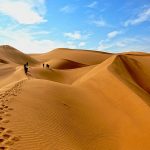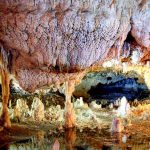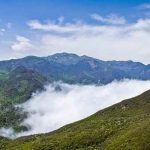Geography of Iran
Iran has two main mountain ranges: Alborz, which has the highest peak in the Middle East (Damavand with an altitude of 5,671 meters above sea level) and Zagros, which stretches 1,600 km from the northwest to the southeast. from the country.
There are other local mountain ranges in Iran, bordered by the central plateau, including the desert plain, a huge desert in northwestern Iran, Dasht-e Kavir, and the Lut desert in southeastern Iran. There are river basins in these regions that are demonstrative examples of the determination of ancient Iranians to survive and bring life to arid and waterless areas.
There are numerous rivers in Iran, most of which are shallow and deep, making navigation on these rivers impossible. The only navigable river in Iran is Karun, which runs through the city of Ahvaz, in the south-west of the country, and empties into the Persian Gulf. Most of the rivers originate in the mountains and flow into reservoirs.
About a third of the total area of Iran is arable and only 10.4% is cultivated. In addition, 6% of the total area of the country is used for cattle grazing. Forest areas have decreased slightly in recent decades, representing 4.3% of the country’s total.
Natural resources
Iran’s vast oil and biogenic fields are mainly located in the southwestern province of Khuzestan in the Persian Gulf. Iran has one of the largest copper reserves in the world, with mines throughout the country, but the main copper mines are in central Iran, between the cities of Yazd and Kerman.
This region is also known as the center of mining, lead, zinc, iron, and coal. There are other coal mines in the Alborz Mountains. The iron mines are located near the city of Zanyán, Mashhad and on the island of Hormuz, in the Strait of Hormuz. Iran has valuable mines for aluminum, chromite, manganese, gold, silver, tin and tungsten. There are also various gemstones, such as lapis lazuli, turquoise, amber, and agate.
Flora and fauna
To date, more than 10,000 plant species have been identified in Iran. The natural forests of Alborz include various trees such as beech, oak, deciduous and coniferous. In some high-altitude areas of the Zagros Mountains, there are forest areas consisting mainly of oak trees. There are wild fruit trees in the Alborz and Zagros Mountains, including almond, pear, pomegranate and walnut trees. In central, eastern and central-western Iran, where the climate is drier, you can find pomegranates and pistachios and other hardy trees. Turmeric and other saline plants grow on the edges of the desert plain.
The high-quality saffron used in kitchens around the world is grown and produced in central, eastern and southeastern Iran, but the best quality comes from the east of the country, in the Khorasan province. Lastly, the Iranian date grown in southern Iran is increasingly appearing outside its borders. Rotab, the most popular date among Iranians, is dark brown, fleshy, sweet, and packed with minerals and potassium.
A great variety of mammals, reptiles, birds and insects live in Iran. Many species of mammals such as wolf, fox, bear, antelope, bighorn sheep, rabbit and rat continue to increase in number in Iran. Some species of birds, such as the Caspian chickadee and the land jay, that live in Iran are indigenous, while other birds are migratory and spend part of the year in other countries.
Lions, tigers, panthers, and cheetahs lived in Iran. However, currently, most of these animals are extinct, but the country is still the habitat of many animal species, such as jackal, leopard, wild boar, hyena, deer, wild ass, cheetah and Mazandaran tiger. Many migratory birds come to the Persian Gulf coast each year and there are more than 500 species. Among them, belonging to 80 families and 10 orders, about 320 species breed in Iran, 90 species are winter migrants and 24 species are transit migrants. Finally, the Caspian Sea is rich in sturgeon, highly coveted for its high-quality caviar produced exclusively by Shilat, the state-owned company that manages and controls the presence of this fish and, ultimately, legal fishing. Other types of caviar on the market can be grown in tanks or even in the sea.




